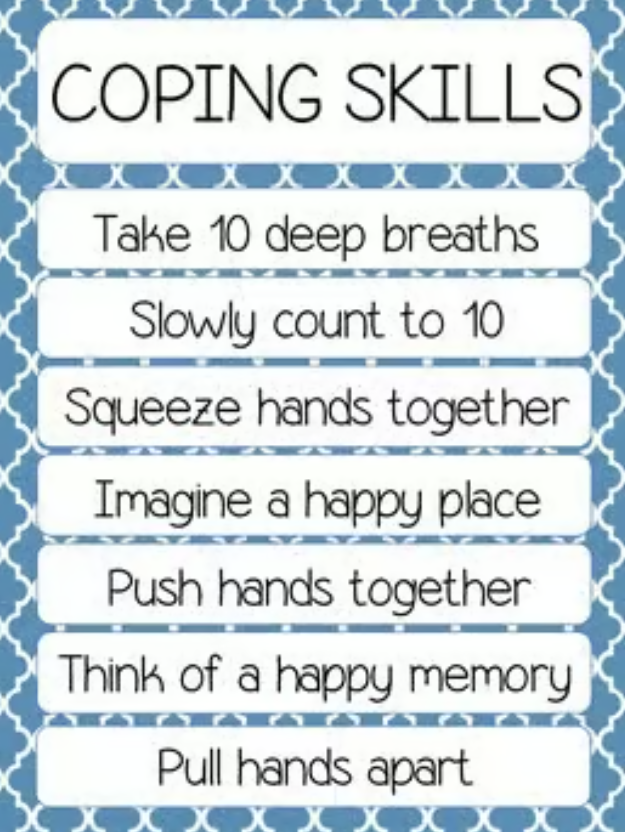April 30, 2025
You’ve been building your students’ confidence all year. You’ve celebrated their growth, encouraged their curiosity, and watched them tackle challenges head-on. But then test day arrives. Some kids freeze. Others get stuck in a loop of negative thoughts. A few shut down entirely.
That’s test anxiety, and it’s more common than we’d like to admit. If we don’t address it early, it can spiral into a cycle where kids avoid challenges, disengage from learning, and develop a lasting fear of failure. But here’s the good news: We can break that cycle.
In this post, we’ll explore why test anxiety happens, what it looks like (even in young children), and most importantly, how we can create a supportive classroom where students build confidence, not fear.
What Does Test Anxiety Look Like in the Classroom?
Test anxiety isn’t just about feeling nervous before a big exam. It’s a physical, emotional, and mental response that shows up in different ways. You’ve probably seen it before:
- The overthinker is stuck in a loop of negative thoughts, second-guessing every answer.
- The shutdown freezes up and can’t get started. Their mind goes blank.
- The fidgeter is restless, distracted, and unable to stay focused.
These are the kids who know the material but can’t show what they know when the stakes feel too high.

Why Does Test Anxiety Happen?
Test anxiety isn’t just a normal part of growing up. It’s often fueled by a combination of factors:
- High-stakes pressure makes students believe that a test will define their success, adding emotional weight that becomes overwhelming.
- Fear of failure can cause students to internalize low scores as a reflection of their intelligence or self-worth, making mistakes feel unbearable.
- Lack of coping strategies leaves kids feeling helpless in the face of pressure because they don’t have the tools to manage stress effectively.
When we teach students that mistakes are part of learning and give them the strategies to navigate stress, we give them the tools to face challenges with confidence.
How Test Anxiety Shows Up in Younger Students
Younger kids may not have the words to express their anxiety, but their bodies and behaviors often do the talking. According to the National Health Service (NHS) and the Cleveland Clinic, here are some telltale signs:
🤒Physical signs: complaints of stomachaches or headaches, especially on test days. Changes in sleep patterns, such as difficulty falling asleep or waking up frequently, are also common.
😢 Emotional changes: increased irritability, sudden mood swings, or unexpected tears. Younger children may also develop a heightened fear of making mistakes.
❌ Behavioral shifts: avoiding school or test-related activities, seeking frequent reassurance, or showing signs of perfectionism.
🔙 Regressive behaviors: increased clinginess to caregivers or teachers. Younger children may even revert to earlier behaviors, like bedwetting.
These signs often show up at home, making communication between school and families essential. When we recognize these patterns early, we can offer the right support before anxiety takes hold. (NHS, 2023, Cleveland Clinic, 2023)
Strategies to Reduce Test Anxiety and Build Lasting Confidence
Reframe Mistakes as Learning Opportunities
Mistakes aren’t the enemy. They’re how we learn. When we create a culture where errors are expected and explored, we take the fear out of failing. Try using phrases like:
“What did we learn from that mistake?”
“Let’s figure this out together.”
When kids know they won’t be judged for getting it wrong, they’re more likely to take risks and engage fully in the learning process.
Use Low-Stakes Practice to Build Comfort with Tests
The Hechinger Report highlights how low-stakes practice can reduce anxiety over time. These opportunities allow students to practice without the weight of a grade attached. Consider using:
- Quick (but purposeful) check-ins that feel like a game.
- Partner activities where kids talk through their thinking.
- Fun review activities that let kids engage with content without the pressure of a grade.
⚠️ But what about long practice tests?
Many of us have heard the idea that giving kids long, multiple-choice tests throughout the year will “get them ready” for standardized assessments. But research—and experience—tell us otherwise.
- Test fatigue sets in with repeated exposure to high-stakes environments, which can lead to burnout, NOT stamina.
- It teaches test-taking, not problem-solving, because multiple-choice tests focus on finding the right answer rather than understanding the “why” behind it.
- Anxiety increases with over-testing, making the real test feel even more daunting.
A better approach is to use formative assessments that emphasize feedback and growth. Short, low-stakes tasks give students a chance to reflect, revise, and build confidence.
If you’re required to engage in test prep with your kids, there are effective ways to “get ready” for the test.
Teach Coping Strategies for Test Day
We can’t assume kids know how to calm themselves down. Explicitly teaching coping strategies gives them tools to manage their emotions. Try introducing:
- Deep breathing to slow a racing heart.
- Positive self-talk to help students replace “I’m going to fail” with “I’m ready to try.”
- Visualization to encourage kids to picture themselves staying calm and focused during the test.

https://www.teacherspayteachers.com/Product/Coping-Skills-Chart-1490009
Break Big Tasks into Manageable Steps
Big tasks can feel overwhelming. When we break them down, they become doable. Use strategies like:
- Graphic organizers to map out ideas (example: Structures of Equality for word problems)
- Checklists to track progress.
- Chunking techniques to tackle one part of the task at a time.
When tasks feel manageable, anxiety loses its grip.
The Math Anxiety Layer: When Test Anxiety Meets Math Anxiety
For many students, test anxiety and math anxiety go hand-in-hand. When a child already feels anxious about math and then encounters it in a high-stakes test environment, the stress can become overwhelming.
Encouraging a growth mindset helps, but it’s not always enough. Even when kids believe they can improve, the pressure of a timed test can override that mindset, triggering the same cycle of anxiety and self-doubt.
That’s why it’s important to layer growth mindset strategies with explicit test-taking supports. Brain dumps, breaking down tasks, and practicing coping strategies can help students feel more in control. When we combine these approaches, we strengthen problem-solving skills and build confidence in high-pressure situations.
Let’s Build Confidence, Not Fear
Our goal isn’t just to help kids pass tests. It’s to build confident learners who approach challenges with curiosity, not fear. When we address test anxiety head-on and equip students with strategies to manage stress, we empower them to face not just tests—but life—with a sense of calm and confidence.